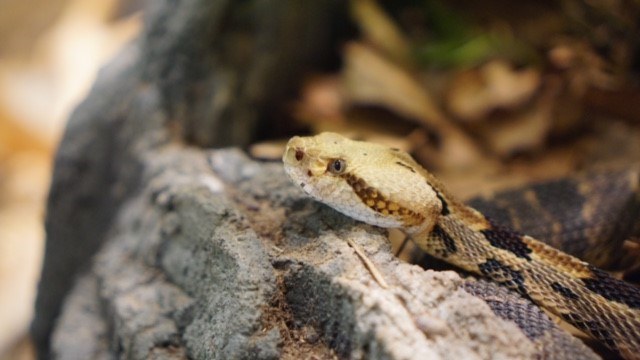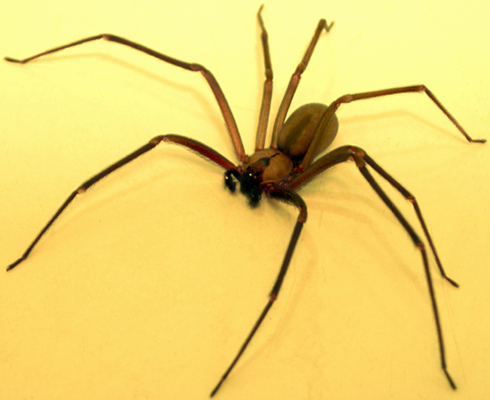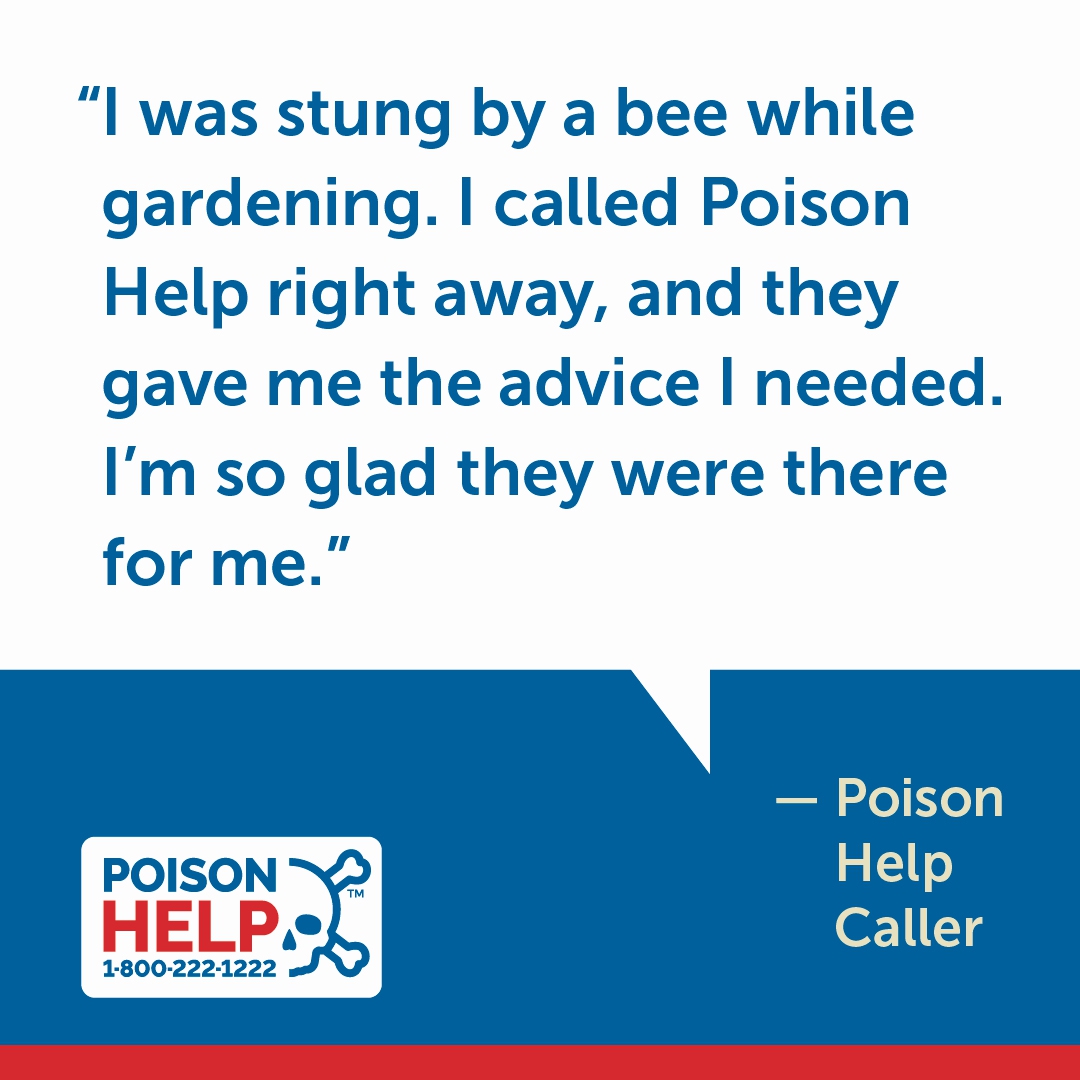-
Snakes
Oklahoma is home to 44 different kind of snakes, but only a few have venom. Snakes in Oklahoma are most active from April through October.
The venomous snakes of Oklahoma include:
- Western Massasauga Rattlesnake
- Prairie Rattlesnake
- Western Diamond-backed Rattlesnake
- Timber Rattlesnake
- Western Pygmy Rattlesnake
- Copperhead
- Cottonmouth
Download, print and share our Oklahoma Snake Brochure
You have probably heard advice about what to do if bitten by a snake. Unfortunately, not all steps people take to treat a snake bite make the situation better.

If Bitten
Do:
- Sit down and stay calm.
- Wash the wound with warm soapy water.
- Remove jewelry or tight clothing.
- Keep the bitten area still and rise to heart level.
- Call the Oklahoma Center for Poison & Drug Information.
- If a snakebite victim is having chest pain, difficulty breathing, face swelling or has lost consciousness call 911 immediately.
Do NOT:
- Cut the bitten area and try to drain the venom.
- Try to remove the venom by sucking it or using a suction device.
- Ice the area. Ice may cause additional tissue damage.
- Apply a tourniquet or tight bandage. It is better for the venom to flow through the body than for stay in one area.
- Attempt to catch tor kill the snake.
- Give the victim sedatives or alcohol.
If a snakebite victim is having chest pain, difficulty breathing, face swelling or has lost consciousness, call 911 immediately.
-
Spiders
Some spiders can cause illness in some people. Two common spiders that can harm you are the female black widow and the brown recluse. A bite from one of these spiders can cause serious problems in a child, a senior, or a person in poor health. However, these bites rarely cause death.
The Black Widow
The female black widow is a black, shiny spider. It has a red or orange hourglass shape on its underside. Within 30 minutes to 120 minutes after being bitten by the female, you may feel stomach pain, dizziness, and headache. The bite may cause a sharp, pinprick-like pain. This pain may subside and reappear as a dull, throbbing ache followed by severe muscle pain and cramps. Black widows prefer dark, quiet places like garages, meter boxes or furniture.
Brown Recluse

The brown recluse is a yellowish-tan to dark brown spider. It has a small body and long legs. The brown recluse has a brown violin marking on the top side of its middle section. Habitats include cracks, crevices and dark undisturbed places like attics and closets.
Signs and Symptoms
- Mild to severe pain usually develops within two to eight hours. One or two tiny puncture holes may be seen at the site of the bite, surrounded by a white and red "halo".
- Blisters usually appear within 24 hours. An ulcer may be seen within 48 hours. Pain and itching increase.
- The bite area also feels hot, swollen and warm to the touch.
- Within 24 to 48 hours, there may be u-like symptoms, joint pain and rash.
- If you see dark urine within 72 hours after a bite, get medical attention right away.
- Serious symptoms may occur in children.
- The tissue dies and sloughs away and an open ulcer may form within one to two weeks.
- Although rare, serious reactions may cause death. No antidote is currently available. Treatment consists of good first aid care and observing for the above symptoms.
-
Ticks
Oklahoma ticks include the Lone Star, American dog and black-legged tick. Ticks are capable of transmitting several diseases, including Rocky Mountain spotted fever, ehrlichiosis, Lyme disease, STARI (Southern tick-associated rash illness) and tularemia. If you become ill within one week of a recent tick bite or after visiting a tick-infested area, call a physician right away!
Prevention Tips
- Wear light-colored clothing so that ticks can be seen more easily. Wear long-sleeved shirts and long pants tucked into socks. Wear closed-toe shoes, not sandals.
- Examine everyone frequently, including pets, for ticks. The longer the tick remains attached, the greater the risk of tick-borne illness.
- Use an insect repellent on skin and clothing. Follow the directions specified on the container and use the lowest strength for children. Reapply as directed on the label.
-
Scorpions
Scorpions in Oklahoma can cause a painful sting, but serious, life-threatening symptoms are rare. Swelling is generally limited. The sensation of numbness and tingling may occur but usually stops within 24 hours. A cold pack placed on the sting site is usually quite effective in reducing pain. An additional symptom that can be seen following a scorpion sting is a metallic taste in the mouth. This is not unusual,and does not indicate a problem. General first aid care is usually all the treatment that is required.
-
Bees, Wasps and Hornets

For a bee sting, remove the stinger from the wound as quickly as possible to prevent the injection of additional venom. Bees have barbed stingers, which are left embedded in the skin, usually with the venom sac still attached. After stinging, the bee will die.
- Remove the stinger by grasping it close to the skin, or scraping across the skin using the edge of a credit card, coin, or other dull object.
- Do NOT squeeze the venom sac, as that will result in more venom being injected into the skin.
- After the stinger has been removed, follow with general first aid care for the wound.
Symptoms usually go away within a few hours. Because their stingers have no barbs, wasps and hornets may sting repeatedly. These stings can easily become infected.
If you have trouble breathing or rapid and severe swelling, call 911 immediately. For any other symptoms outside the immediate area of the injury, such as flu-like symptoms.
-
Insect Repellant
Insect bites/stings. Be alert to insects that may bite or sting. After a sting, the site will show redness and swelling. It may be itchy and painful. Be careful around bees, wasps, hornets, and yellow jackets. Some people are allergic to insect stings. To these people, a sting may cause serious problems and even death. Go to a hospital right away if you are stung and have any of these signs: hives, dizziness, breathing trouble, or swelling around eyes and mouth.
Insect repellant
- Be sure to check the label on any insect repellent.
- Most contain DEET, which can harm children if used improperly or in large amounts.
- Do not allow children to apply repellent to themselves.
- When using repellent on a child, put a little on your own hands, then rub them on your child.
- Avoid the eyes and mouth.
- Use separate products when there is a need for insect spray and sunscreen.
- Do not use sunscreen that contains DEET.
- Repeatedly applying a product with DEET can increase the risk of harmful effects.
- Always follow the instructions on the label.
- For most products, after returning indoors, wash treated skin with soap and water.
- Call the Poison Helpline with your questions.
Bites and Stings
Bites and stings are common in Oklahoma. Our staff are here 24/7 to take your calls and questions.